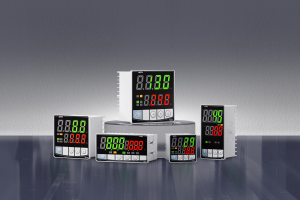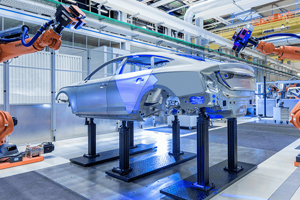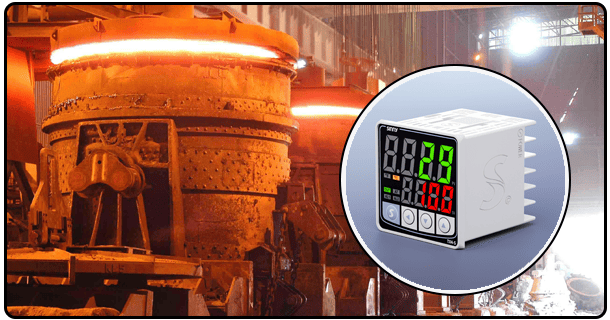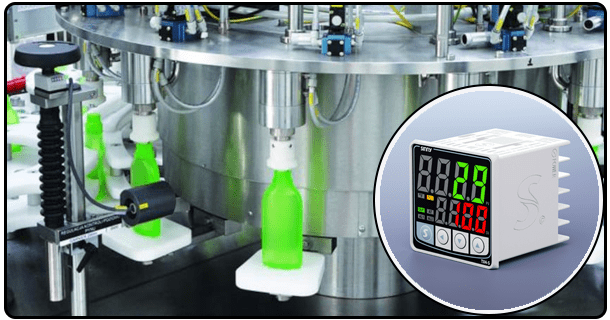Understanding PID Temperature Controllers
1. The following is a brief introduction to the topic
Temperature regulation is an important part of many industries in a world that values precision, accuracy and control.
2. What is PID temperature controller?
The PID controller regulates temperature by minimising the difference between desired setpoint temperature and actual temperature. A mathematical feedback mechanism is used to achieve this.
A PID controller is more sophisticated than simpler systems, such as ON/OFF controls that start and stop abruptly based on threshold temperatures. The gradual adjustment reduces oscillations. PID controllers are incredibly precise, making them a valuable tool in industrial processes that require accurate and stable temperature control.
3. The components of a PID temperature control system
Three primary components make up a PID system, and each plays a different role in the functionality of this control:
Sensors detect changes in temperature. Examples include resistance temperature detectors and thermocouples. Sensor output is used to adjust the sensor.
Control Unit This unit processes data input and performs corrections using integral, proportional and derivative algorithms.
Actuators These devices are used to implement controller directives such as heating and cooling to get the system to a desired setpoint.
These components work together to create a system that is capable of providing unmatched control over the temperature.
4. What are PID temperature controllers?
Three integral actions are at the heart of a PID control.
Proportional (P-) : Provides an immediate reaction to error (differences between the setpoint and process variables). Larger errors result in stronger corrections.
Integral accumulates errors in the past over time. It addresses long-term issues and eliminates steady-state errors.
Derived (D) : It predicts errors in the future by monitoring the rate of changes. This allows for corrections to be made before the error occurs.
Combining these three steps, a PID control ensures smoother transitions in temperature. In industrial baking, for example, the temperature of an oven is maintained to ensure consistent quality products without overheating.
5. PID Temperature Controls: Applications
The PID temperature control is used in a wide range of industries including, but not limited to
Food processing: Ensure stable temperatures when cooking or freezing food for safety and quality.
Pharmaceuticals : Maintaining exact conditions for chemical reactions and storage.
HVAC System: Provides efficient control of heating, ventilation and air conditioning.
They are indispensable for fields in which temperature fluctuations can cause significant loss or inefficiency.
6. The advantages of using PID temperature controllers
PID controllers are widely used because of their many advantages.
Precision By minimising overshoots or undershoots they maintain the optimal temperatures.
Stability : These reduce the fluctuations which could destabilize a process.
Energy Efficient By making gradual changes, these systems consume less energy than those that alternate abruptly between the on and off state.
Adaptability can adapt to different systems and be used for a variety of applications.
The industrial process will be more efficient and produce better quality products.
7. How to Set Up and Tune a PID Thermostat Controller
Although PID controllers are a great choice for performance, they require careful setup and tuning.
Installation : Make sure that the sensors are placed accurately and securely connected to controllers and actuators.
Configuration : Enter the correct parameters, such as control limit and set point.
Tuning : You can use methods such as Ziegler-Nichols, or try-and-error, to determine the optimal gains for integral, proportional and derivative gain.
Even though they are sophisticated, simple challenges like incorrect sensor readings and aggressive tuning may lead to instability. Regular monitoring and adjustment are therefore crucial for achieving the desired results.
8. The conclusion of the article is:
The PID controller is a great example of how modern control systems streamline industrial processes. They are distinguished by their precision, adaptability, and stability. Understanding their applications and setting up processes is key to harnessing their full potential.
Consult experts and resources to gain valuable insight if you want to know more about PID temperature controls or how they can be implemented in your process.
Understanding PID temperature controllers: Principles and Applications as well as Advantages
Explore the applications and benefits of PID temperature control systems. Find out how PID temperature controllers are used to regulate temperatures precisely in different industries. Learn about their benefits, components and tuning methods."
- Why Use PID Temperature Controls? Key Features, Benefits and Applications
- Wiring a PID temperature controller for 220V: A comprehensive guide























